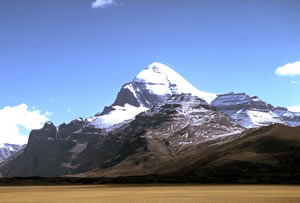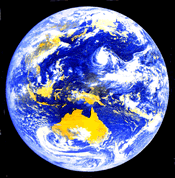Intuition and the Creation of a Better World
Straight Knowledge
Agni Yoga
The subtlety of straight-knowledge impels the spirit to the higher spheres. As if providing wings, the straight-knowledge exalts the spirit. The spirit of the Agni Yogi strives forward like a predestined fiery stream. Therefore, Our Mother of Agni Yoga fierily creates. In the Epoch of Maitreya each fiery attainment is reached through tension; hence, each striving action has fire in its essence. Thus, Our closest co-workers create fierily. When We say "fierily" it means ardently; it means by the higher ways; it means in pure spirit; it means through beauty; it means through the understanding of the Common Good and, having understood the Common Good, it means without self-interest, without egotism; it means by applying the Teaching.
Infinity II, sl. 189
Agni Yoga
The sculptor's touch cannot be described in words. He himself will not be able to say precisely why he used a stroke of just such a depth. Similarly, you should correlate straight-knowledge with reality. The Teaching makes it possible to consider as reality that which yesterday was still unrealized.
Fiery World I, sl.46
Aurobindo, Sri
The mind can think and doubt and question and accept and withdraw its acceptance, make formations and unmake them, pass decisions and revoke them, judging always on the surface and by surface indications and therefore never coming to any deep and firm experience of Truth, but by itself it can do no more. There are only three ways by which it can make itself a channel or instrument of Truth. Either it must fall silent in the Self and give room for wider and greater consciousness; or it must make itself passive to an inner Light and allow that Light to use it as a means of expression; or else, it must itself change from the questioning intellectual superficial mind it now is to an intuitive intelligence, a mind vision fit for the direct perception of the divine Truth.
Sri Aurobindo, Letters on Yoga, p. 161
Eco, Umberto
[On discussing unicorns with Adso, their existence or not, and their meaning.]
'The print does not always have the same shape as the body that impressed it, and it doesn't always derive from the pressure of the body. At times it reproduces the impression a body has left in our mind; it is the print of an idea. The idea is sign of things, and the image is sign of the idea, sign of a sign. But from the image I reconstruct, if not the body, the idea that others had of it.'
'And this is enough for you?'
'No, because true learning must be content with ideas, which are, in fact, signs, but must discover things in their individual truth. And so I would like to go back from this print of a print to the individual unicorn that stands at the beginning of the chain ....'
Umberto Eco, ' The Name of the Rose
Govinda, Lama Anagarika
According to the Lankavatara-Sutra the arbitrarily discriminating intellect can only be overcome if a complete 'turning-about' has taken place in the deepest seat of consciousness. The habit of looking outwards, i.e., towards external objects, must be given up and a new spiritual attitude established of realizing truth or ultimate reality within the intuitive consciousness, by becoming one with reality.
Lama Anagarika Govinda, Foundations of Tibetan Mysticism, p. 79
Govinda, Lama Anagarika
The Buddha, certainly, was no enemy of logical thinking, of which indeed he made the fullest use, but he perceived its limitations and therefore taught what goes beyond it: the direct awareness of spiritual vision (dhyana) which surpasses mere ratiocination (vitarka-vicara). This is expressed in the figure of Amitabha and his 'Prajna' in the pure, stainless white raiment of intuition.
The Buddha, certainly, was no enemy of logical thinking, of which indeed he made the fullest use, but he perceived its limitations and therefore taught what goes beyond it: the direct awareness of spiritual vision (dhyana) which surpasses mere ratiocination (vitarka-vicara). This is expressed in the figure of Amitabha and his 'Prajna' in the pure, stainless white raiment of intuition.
Lama Anagarika Govinda, Foundations of Tibetan Mysticism. New York, Weiser, 1969, p. 110
Kamenetz, Rodger
[From a dialogue between Rabbi Zalman Schachter and HH the Dalai Lama]
Zalman explained that intuition was "knowing by being rather than with your head."
"Knowing something automatically, spontaneously," the Dalai Lama suggested.
Zalman nodded. "And by identity." He pointed to the Dalai Lama. "I know you now as an other." He pointed to his palm. "You know yourself as a self. If I were to know you as you know yourself, that would be intuition."
Rodger Kamenetz, The Jew in the Lotus, pp. 76 - 77
Roerich, Helena
Thus, let us be modest in our expectations of the leaders, rulers, and judges of the future. It will be excellent if they possess well developed straight-knowledge, which will help them to correctly assess the true essence of each work and event, and if they will always be guided by the voice of the heart balanced by the intellect.
Helena Roerich, Letters of Helena Roerich, Vol. 2, pp. 171-2
Sumedho, Ajhan
The Buddhist practice is to abide in a pure mindfulness in which there is what we call insight knowing, or direct knowledge. It is a knowledge that isn't based on perception, an idea, a position, or a doctrine, and this knowledge can only be possible through mindfulness. What we mean by mindfulness is the ability to not attach to any object, either in the material realm or the mental realm. When there is no attachment, the mind is in its pure state of awareness, intelligence and clarity. That is mindfulness. The mind is pure and receptive, sensitive to the existing conditions ....
Ajahn Sumedho, The Mind and the Way: Buddhist Reflections on Life, p.9
Thakar, Vimala
... the Yoga Sutras [of Patanjali] analyse the mystery of life into 2 different kinds of energies – the seeing energy – drik shakti or drashta and the seen energy – the drishya or darshan shakti. The objective material world is called the drishya or darshar shakti – that which is seen, that which can be observed. And mankind with its consciousness, having the seed of pure seeing, having the potential of pure seeing, is the seer. As we contain self-consciousness, we also contain the energy of pure seeing – pure perception, which we have not explored. We have been so busy with the self consciousness and its acquisitions and its possessions that we have no time to look at this potential in us of being a pure seer.
Vimala Thakar, Yoga Beyond Meditation, p. 25
Steiner, Rudolf
To have knowledge of a spiritual being through intuition means having become completely at one with it, having united with its inner nature… Imagination brings us to the point where we no longer feel that perceptions are external qualities of beings; instead we recognize in them the emanations of something that is soul-spiritual in character. Inspiration leads us still further into the inner nature of beings and teaches us to understand what these beings are for each other. In intuition, we penetrate into the beings themselves.
Rudolf Steiner, An Outline of Esoteric Science, p.338, Great Barrington, MA, Anthroposophic Press, 1997
Steiner, Rudolf
Through inspiration one acquires the knowledge of the relationships between the beings of the higher world. It is possible through a higher stage of cognition to understand the nature of these beings themselves. This stage of cognition may be designated intuitive cognition. (Intuition is a word misused in everyday life for an obscure, uncertain insight into a fact, that is, for a certain idea which at times agrees with truth but the justification of which is at the time not provable. What is meant here has naturally nothing to do with this sort of intuition. Intuition denotes here a cognition of the highest, most illuminating clarity, and, if one has it, one is conscious in the fullest sense of its justification.) —To have knowledge of a sense-being means to stand outside it and judge it according to the external impression. To have knowledge of a spiritual being through intuition means to have become completely one with it, to have become united with its inner nature.
Rudolf Steiner, An Outline of Occult Science. Spring Valley (NY), Anthroposophic Press, 1972 pp. 309-10. Currently published as An Outline of Esoteric Science.
Tolle, Eckhart
Once there is a certain degree of Presence, of still and alert attention in human beings' perceptions, they can sense the divine life essence, the one indwelling consciousness or spirit in every creature, every life-form, recognize it as one with their own essence and so love it as themselves. Until this happens, however, most humans see only the outer forms, unaware of the inner essence, just as they are unaware of their own essence and identify only with their own physical and psychological form.
Eckhart Tolle, A New Earth: Awakening to Your Life's Purpose. New York, Penguin, 2006, p. 4
Zajonc, Arthur
… when Goethe maintained that one can only come to know that which one loves, he had in mind an understanding of knowing that ranged far beyond information processing. Such knowing is not distant from the object to be known, nor is it exploitative. Its motives are high, its methods gentle, and its interests selfless. It is time to articulate and practice an epistemology of love instead of one of separation.
Arthur Zajonc, Meditation as Contemplative Inquiry : When Knowing becomes Love. Great Barrington, Mass, Lindisfarne Books, 2009, p. 179

